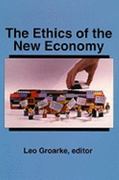Question
Help me answer please,,, Stephany has an income of $2,000 this year, and she expects an income of $1,100 next year. She can borrow and
Help me answer please,,,
Stephany has an income of $2,000 this year, and she expects an income of $1,100 next year. She can borrow and lend money at an interest rate of 10%. Consumption goods cost $1 per unit this year and there is no inflation.
What is the present value of Stephany?
Nina has an income of $2,000 this year, and she expects an income of $1,100 next year. She can borrow and lend money at an interest rate of 10%. Consumption goods cost $1 per unit this year and there is no inflation.
(a) Write down Nina's budget constraint in terms of future value. What is the future value of her endowment?
(b) Write down Nina's budget constraint in terms of present value. What is the present value of her endowment?
(c) Suppose that Nina has the utility function, U(C1, C2)= C1C2. Find Nina's optimal choice of C1 and C2. Will she borrow or save in the first period?
(d) Now the interest rate is 20%. Find Nina's optimal choice of C1 and C2.
Suppose you work for an insurance company. You know that there are equal numbers of individuals who will get in an accident with probability 0.2 and 0.3 and that the loss from getting in an accident is $4,000. Suppose you wish to screen individuals by offering full- coverage insurance as well as 30 percent coinsurance (i.e., the insurance pays 30 percent of the loss amount, or $1,200, in the event of an accident). You wish to include a 5 percent premium over the actuarially fair values for these policies to help cover overhead and pro- vide a profit margin for your company.
Will this pair of policies screen individuals into risk classes if we assume that all insuredindividuals have utility function U(X) ? 2000 (X/4000)0.5 where X is income? Hint: Calculate utility for each of the three options for both types of individuals and compare ex- pected utility levels to see what each will choose.
Background on Expected Utility: In this conceptualization of utility, we can compare uncertain outcomes with certain outcomes.
For example, if an individual does not have insurance and does not get into an accident, he or she has a utility level of 2,000 (because X ? $4,000) or zero if he or she gets into an accident (because then X ? $0). The expected utility is based on the likelihood of each event occurring. A per- son facing a 10 percent chance of having an accident would have an expected utility of 1,800 using this utility function because EU ? 0.9 2,000 ? 0.1 0. This person would be indifferent between facing this "lottery" and having $3,240 with certainty (because U(3240) ? 1,800). This certainty equivalent value was obtained by solving for X in the equation 1800 ? 2000 (X/4000)0.5. The lottery would be preferred to amounts less than $3,240 offered with certainty.

Step by Step Solution
There are 3 Steps involved in it
Step: 1

Get Instant Access to Expert-Tailored Solutions
See step-by-step solutions with expert insights and AI powered tools for academic success
Step: 2

Step: 3

Ace Your Homework with AI
Get the answers you need in no time with our AI-driven, step-by-step assistance
Get Started


